Betsey Stockton was born into #slavery, and emerged as a religious and academic pioneer. She was instrumental in bringing formal education to indigenous Hawaiians and Native Americans, and in establishing numerous schools.
A Young Missionary Sets Sail
Stockton was born sometime in 1798, into childhood slavery in Princeton, New Jersey. The identity of her parents is unknown. Stockton belonged to Robert Stockton, a local attorney, and his wife Elizabeth. She subsequently was “given” to the couple’s daughter and son-in-law, the Reverend Ashbel Green, who was the president of the College of New Jersey now known as Princeton University Stockton worked as a domestic slave in their household.
Stockton proved her commitment to Christianity so sufficiently that at some point in the two years following 1816, she was baptized, at around age 19. The Greens were progressive thinkers who supported the abolitionist movement, and they gave Stockton her freedom on the occasion of her baptism, even though it wouldn’t be until 1825 that a law requiring the gradual emancipation of slaves would go into effect. Stockton attended evening classes at Princeton Theological Seminary while the Greens tutored her and granted her use of their extensive library to further her own education. They kept her on as a paid domestic servant, and eventually accepted her as one of the family.
As Stockton’s religious fervor and academic interests grew, she expressed a desire to go to Africa as a missionary, but an opportunity to go to Hawaii presented itself instead. The Greens introduced her to a man named Charles S. Stewart, a new Princeton Seminary graduate who was about to take a missionary journey to the Sandwich Islands (known today as Hawaii). His trek was sponsored by the American Board of Commissions for Foreign Missions (ABCFM). Stockton showed great interest in joining him and a small group of others in order to preach and educate the island residents. Because of her race and social position, she required letters of recommendation to be presented to the ABCFM. Green wrote favorably on both Stockton and Stewart’s behalf. He commented on Stockton’s exemplary domestic skills and her knowledge of literature and religious writings. Her Sabbath schoolteacher, Michael Osborn, also praised her abilities in a referral letter, commenting on her intellect, piousness, knowledge of scripture, and her likeliness to excel as a teacher.
The ABCFM accepted her as a member of the mission, and on November 22, 1822, at about age 24, Stockton became part of the second missionary group to be sent to the Hawaiian Islands. The agreement drawn up between Green, the Stewarts, and the ABCFM stated that Stockton would continue to work in a domestic capacity for the Stewarts, but that she was not to be assigned menial work. Stewart’s wife, Harriet, was expecting a baby, and Stockton was to assist with that birth, but not partake in domestic duties beyond those of the other missionaries. It was the first voyage to Hawaii by an #African American woman missionary.
Stockton’s Schools Flourish
The five-month journey began in New Haven, Connecticut, where the group set sail for Honolulu. Stockton, along with some others, kept a journal of the voyage. Her early writings spoke of how pleased she was that she was being treated respectfully Her later thoughts reflected on her uneasy inner spiritual life, amazement with the sea’s inhabitants, and her satisfaction at helping deliver the Stewarts’ boy who was born at sea. The ship arrived in Honolulu in April 1823.
Stockton’s first glimpse of the Hawaiian men who came to greet the ship frightened her, but she soon embraced her natural instincts as a missionary and became more at ease around them. She was assigned to a mission in Lahaina, Maui. Prior to this visit, the missionaries only schooled Hawaiians in Christianity, but Stockton persuaded Stewart to allow her to create a general school for the maka’ainana, the common people on the islands. In the past, missionaries had not been allowed by local chiefs to teach the commoners, but in August 1824, the Hawaiian rulers decided to allow it. Stockton learned their language and opened a school in Maui where she taught history English, Latin, and algebra. Her diary speaks of her visit with the Hawaiian king when he came to Maui on June 29, 1823. One of the king’s sons asked Stockton to teach him English, which prompted her to establish a special language school where English and Hawaiian were taught side by side.
In 1825, Stockton left Hawaii when Mrs. Stewart became ill. They returned to the United States while the school that Stockton had developed in Maui thrived. By 1826, 8,000 Hawaiians had received an education as a result of her initial efforts. Mrs. Stewart died in 1830, and teaching became the focal point of Stockton’s life. She taught first at an infant school in Philadelphia, Pennsylvania, and then went on to found a school for Native American children in Grape Island, Canada.
For the three decades between 1835 and 1865, Stockton taught at various schools in the #black areas surrounding Princeton. In 1848, she helped found the first African American Presbyterian Church in Princeton, which eventually became the Witherspoon Street Presbyterian Church. Stockton later established a night school called the Witherspoon Street Colored School, and persuaded seminary students to teach African American history, English, literature, and math there. Stockton died in October 1865, in Princeton.
During her final decades, Stockton proved to be not only a powerful voice in service of education and Christian piety, but also committed herself to the abolitionist movement and provided stirring leadership to the local black community Her legacy of educational engagement with Hawaiians, Native Americans, and urban youth remains a lasting example of what may be achieved through determination, study, and good will, regardless of the circumstances of one’s birth.
The post Betsey Stockton appeared first on Black Heritage Commemorative Society.





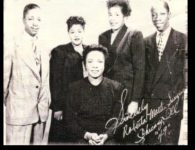
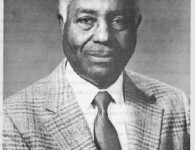





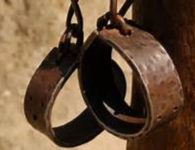



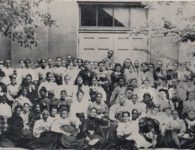

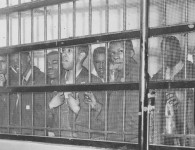


No comments